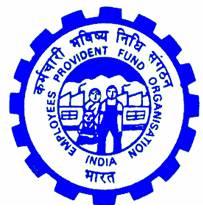The Narendra Modi government has tried initiating a few changes to the way the Employees’ Provident Fund(EPF) operates. And this hasn’t really gone down well with those who have accumulated their savings through EPF.
These moves are in line with what the finance minister Arun Jaitley referred to as “measures for moving towards a pensioned society,” in his February 2016, budget speech.
One such move has been the restriction on the complete withdrawal of EPF. In a notification dated February 10, 2016, the government had specified that an individual investing in EPF can withdraw only his contribution made to the EPF and the interest accumulated thereon, in case the individual is unemployed for a period of at least two months.
Up until now, a 100% withdrawal was possible. In fact, given the way the Employees’ Provident Fund Organisation(EPFO) operated, one could withdraw 100% of the accumulated EPF even at the point of changing jobs. All an individual had to do was to declare that he or she was unemployed.
This loophole has now been plugged in with the introduction of the Universal Account Number(UAN). Earlier, the EPFO could not track the movement of an employee from one job to another, but with UAN that is possible.
In fact, with the new notification, premature withdrawal of 100% EPF corpus would become impossible. Further, the notification also increased the retirement age from 55 years to 58 years.
The change of not allowing to withdraw the full EPF, is in line with what Jaitley had talked about in his budget speech. The idea is to discourage individuals from withdrawing their accumulated EPF corpus. By doing this, the hope is that the individual will have enough money going around when he or she retires.
And at that point of time, the accumulated corpus can be used to generate a regular income after retirement i.e. a pension.
These changes haven’t gone down well with people who contribute to the EPF every month and there have been protests against it. Given this the notification specifying the changes has now been put in abeyance. As the labour minister Bandaru Dattareya told reporters today (April 19, 2016): “The notification will be kept in abeyance for three months till 31 July, 2016. We will discuss this issue with the stakeholders.”
In fact, a PTI news-report also points out that the labour ministry is contemplating allowing withdrawal of 100% of the corpus on grounds like marriage and education of children, purchase of house, serious illnesses etc.
The way the scheme is currently structured, it does not allow a 100% withdrawal for such things. The Section 68K of the Employees’ Provident Fund Scheme 1952, allows for withdrawal of up to 50% of the individual’s contribution and the interest accumulated thereon, “for his or her own marriage, the marriage of his or her daughter, son, sister or brother or for the post-matriculation education of his or her son or daughter.”
As far as medical emergencies are concerned, the amount that can be withdrawn from the EPF should not exceed, the individual’s “basic wages and dearness allowances for six months or his own share of contribution with interest in the Fund, whichever is less.”
News-reports suggest that these limits are likely to be withdrawn in the days to come. If something like that happens, it won’t be good for the society as a whole. The basic idea behind any provident or pension fund is to accumulate enough money so as to be able to live comfortably after retirement.
But if 100% withdrawals are allowed then this will not be possible. Hence, some withdrawals should be allowed, but allowing 100% withdrawals for weddings and education etc., is clearly not a great idea.
This did not matter earlier when people lived in joint families. But in the era of nuclear families and increasing life expectancy, it is important that those retiring from jobs have enough money for themselves.
Further, it needs to be pointed out that the current norms allow 100% withdrawal “on termination of service in the case of mass or individual retrenchment”. Of course, one is quitting the job to become an entrepreneur then a 100% withdrawal is not allowed. But big government schemes cannot be so flexible so as to meet the needs of everyone.
Anyone leaving the country is also allowed to withdraw 100% of the accumulated corpus. Further, those suffering from “total incapacity for work due to bodily or mental infirmity” can withdraw 100% of the corpus. So, the point being that the scheme is flexible “enough”.
Also, as a recent government clarification on the EPF pointed out: “The main category of people for whom EPF scheme was created are the members of EPFO who are within the statutory wage limit of Rs 15,000 per month.”
Hence, for those earning greater than Rs 15,000 per month and looking for the flexibility with their money, should essentially be negotiating with their employers to make a minimum contribution to the EPF and receiving their salaries under other heads.
To conclude, it is safe to say that the Modi government has essentially botched up the entire idea behind a pensioned society. Almost no effort has been made in order to explain the basic idea behind the phrase, which is actually a good one.
For a government which is pretty good at marketing itself that is rather ironical.
(Vivek Kaul is the author of the Easy Money trilogy. He can be reached at [email protected])
The column originally appeared in the Bangalore Mirror on April 20, 2016
